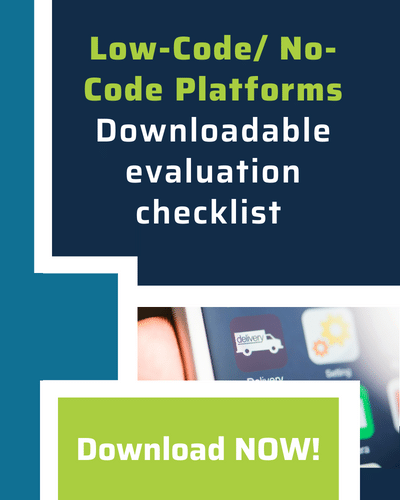The economic outlook going into 2023 includes grim financial market conditions with high-interest rates and the threat of an oncoming recession. That means tightening the belt and making fiscally wise decisions. Furthermore, we face a global developer shortage, aging systems, and lower IT budgets. At the same time, companies need to move faster than usual and that requires flexibility and speed from the IT side to keep pace with business changes. This means doing much more with fewer resources to ensure that businesses deliver on their goals.
One of the ways to achieve this is with automation of the IT application development and management process. Application development is a cradle of innovation for any organization, and managing those applications is critical to the operations of the business. Automation and democratization of application development and management benefit an organization in several different ways:
- Frees an organization’s locked resources
- Provides much-needed speed
- Supports flexibility to change processes along with business needs
- Eliminates the dependency on IT vendors so that it can be scaled easily without being constrained by IT talent
This automation and democratization of application development and management can be achieved by modern low-code/no-code (LC/NC) solutions. A good, enterprise LC/NC solution will enable enterprises to:
- Escape from the trap of vendor dependency and lock-in, whether COTS application vendors or custom-developed software
- Provide applications that are fine-tuned and governed by the industry's best practice business processes instead of modifying business processes to suit an application vendor's requirements
- Focus on building agile, empowered and enthusiastic competencies instead of filling in talent holes amidst this talent shortage and taking on additional cost burdens
- Upskill existing employees, democratizing IT development to business technologists and savvy citizen developers yet maintaining IT governance and control across the organization.
The Characteristics of an Ideal Low-code/No-code Solution
An ideal LC/NC solution will include the following:
- Robust, an enterprise-grade solution with all the IT governance, security, backend Integration, and scalability needed to support business needs across the organization
- Easy and simple and able to be scaled outside IT teams to business technologists and citizen developers
- Able to support various business use-cases from simple ones like PO/PR /travel/ expense and workflow approvals to complex use-cases like product management, warehouse management, logistics and supply chain, all tightly integrated to your ERP like SAP and/or Oracle
- Scalable and forward-looking, provided by a responsible vendor that is totally supportive, flexible, and responsive to market changes
- Able to pay for itself in a short timeframe
The questions that every enterprise should consider when looking into low-code application development solutions are:
- Has the business historically developed its own apps?
- Can the enterprise recognize the opportunities and processes to develop apps between the business and IT, bringing rigor, control, and best practices, while maintaining governance?
- If the business processes mandate quick process changes to keep up with the ever fluctuating business environment, then why is an off-the-shelf, rigid application more appropriate than a configurable, best practices framework?
We at Pillir believe we can help and support your business automation and modernization journey and would love to discuss it further with you. We also created for you a template evaluation checklist to allow you to better compare different low-code/no-code solutions, you can find it here.




 Back
Back/Logo%20-%20black%20text%20blue%20pillar%20(large)-1.jpg)

